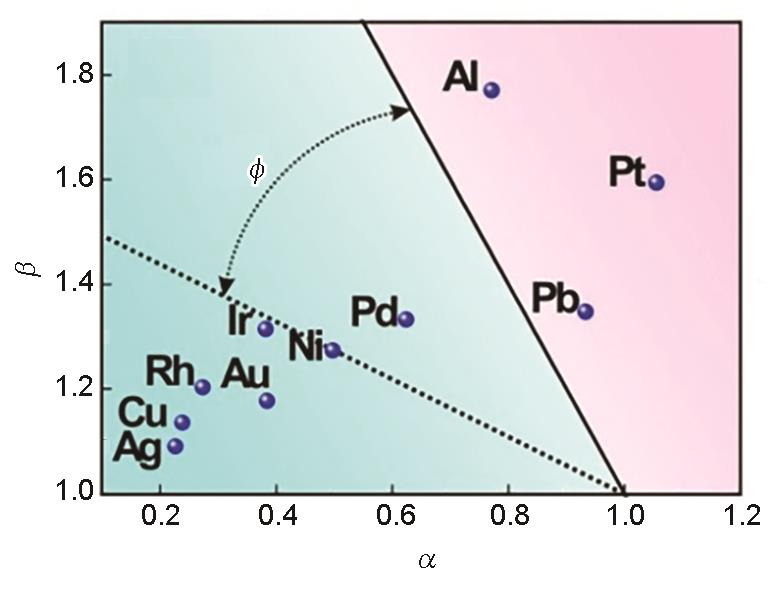层错能对面心立方金属形变机制与力学性能的影响
Effects of Stacking Fault Energy on the Deformation Mechanisms and Mechanical Properties of Face-Centered Cubic Metals

层错能对面心立方金属形变机制与力学性能的影响 |
| 张哲峰, 李克强, 蔡拓, 李鹏, 张振军, 刘睿, 杨金波, 张鹏 |
|
Effects of Stacking Fault Energy on the Deformation Mechanisms and Mechanical Properties of Face-Centered Cubic Metals |
| ZHANG Zhefeng, LI Keqiang, CAI Tuo, LI Peng, ZHANG Zhenjun, LIU Rui, YANG Jinbo, ZHANG Peng |
| 图3 不同fcc金属在α-β坐标系内从滑移过渡到形变孪生的能力比较[ |
| Fig.3 Illustration presents the transition from slipping to twinning for various fcc metals in α-β coordinate system ( |

|